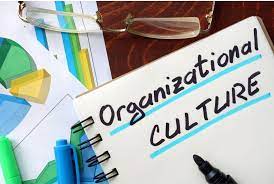
Always keep your composure. You can’t score from the penalty box, and to win, you have to score. – Horace
I read a story about actress Carol Burnett some time ago. One day, she was getting out of a cab, and her coat was caught in the door. The driver was unaware of her plight and slowly began to merge into traffic. The actress had to run alongside down the block to keep from being pulled off her feet.
A passerby noticed her predicament and quickly alerted the driver. He stopped, jumped out, and released Burnett’s coat. “Are you all right?” he asked anxiously. “Yes,” she gasped, but how much more do I owe you?”
Given our current circumstances, I can’t help but appreciate Burnett’s reaction. Given today’s litigation culture, it could have ended differently for the cab driver with a different passenger. How you and I keep our composure in the face of challenging times is a matter of good leadership.
In a survey by Harvard Business Review, 85% of executives believe that composure is crucial for effective leadership during a crisis. This is important to you as a leader, whether in a crisis or not.
Composure impacts decision-making, how your team functions under pressure, and how you lead your team through times of transition. But more importantly, it matters in your day-to-day leadership and the example you set. When your team members see that you can consistently respond no matter the situation, you are modeling leadership at a higher level.
How much thought have you given to composure as a vital part of your leadership DNA? What leaders have you been directly associated with who modeled composure well? How about those who were poor examples of leaders without it?
Every leader you have been around has modeled composure in some way, and you have learned from it. How are you modeling it yourself? What are the challenges? What are your struggles? Let’s explore a few ideas about keeping our composure as leaders.
Composure for the sake of your leadership
Before you can be a leader with composure for your team, you must be a leader of composure for yourself. It’s been noted repeatedly that the hardest person you will ever lead is yourself. Without discipline and maturity that drives composure, this area of your leadership will be a struggle.
For reflection: Do you know your strengths and weaknesses under pressure? Do you know your tipping points that put it all in jeopardy? Do you know how to manage your emotions under pressure best? Are you a reliable source of emotional stability for your team in times of crisis? Can your team members look to you with confidence that you are up for the challenge? You must come to grips with these types of questions as a leader to effectively lead others around you.
Additional Resource: How Leaders Keep Calm in a Crisis
Composure for the sake of morale
The late football coaching legend Tom Landry said, “Leadership is a matter of having people look at you and gain confidence, seeing how you react. If you’re in control, they’re in control.” And this is why composure matters in leadership.
It’s one thing for the leader to have composure, but modeling it instills confidence in the people around you. When you exemplify composure, you are acting as a thermostat for those around you – your level of composure will elevate those around you.
For reflection: Is your level of composure helping or hurting the morale of your team? Do those around you see a confident and composed leader in you? In what ways will your team benefit from a renewed sense of composure and confidence office-wide?
Additional Resource: How Indecisive Leaders Hurt Morale
Composure for the sake of growth
You can weather any challenge as a leader with composure and a team with composure. Healthy leaders producing healthy teams and organizations lead to more substantial confidence and purpose in the future. Composure is essential to it all.
For reflection: In what ways are you developing composure as an essential leadership skill not only for yourself, but for the rest of your team? Do your team members understand the need to create this skill? How will your organization benefit from it?
For reflection: In what ways are you developing composure as an essential leadership skill not only for yourself, but for the rest of your team? Do your team members understand the need to create this skill? How will your organization benefit from it?
Additional Resource: High Stakes Growth
©2025 Doug Dickerson










